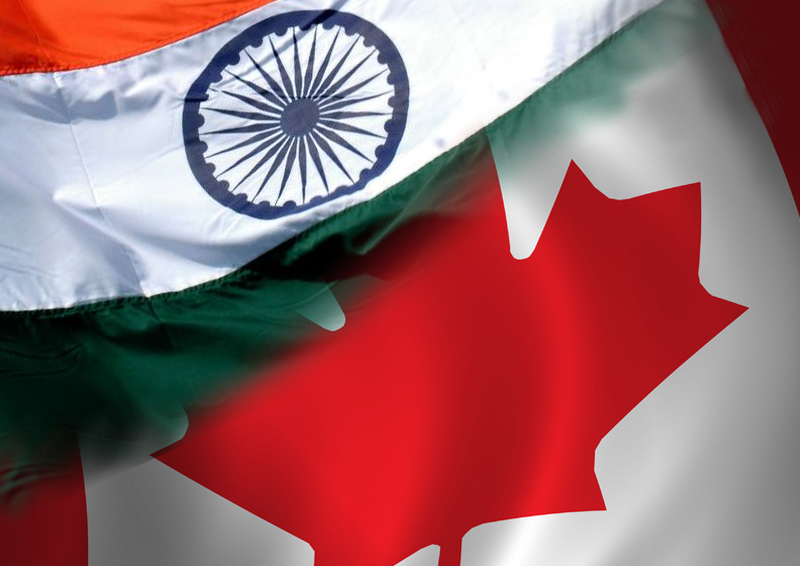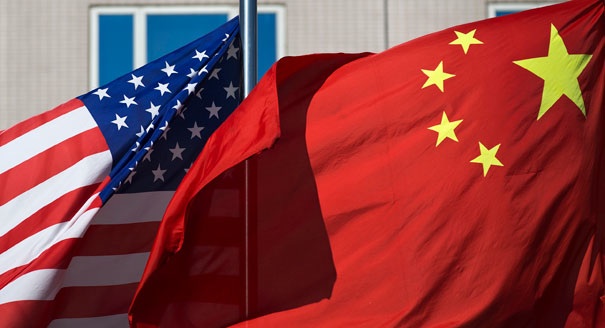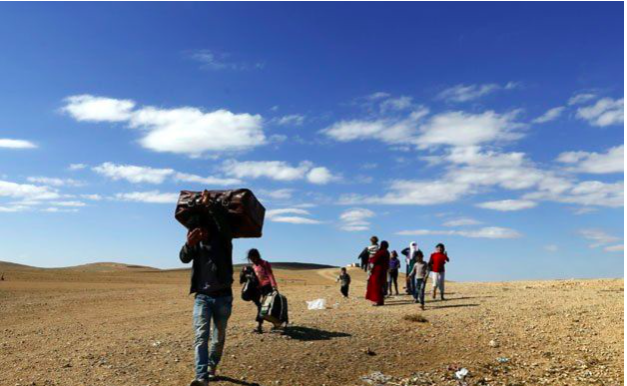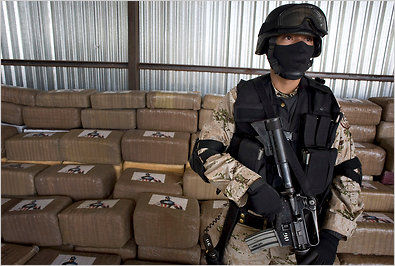 At first glance, India might raise some questions as to why it would have an interest in the Arctic, being located in South Asia and having nearly an entire ocean to itself. However, a deeper examination will reveal that India has very good reasons to pay attention to the Arctic: environmental and economic, both of which are directly linked with China and the littoral Arctic states, and in turn combine to form a complex dance of political and strategic concerns about a region that can change the world in the 21st century.
At first glance, India might raise some questions as to why it would have an interest in the Arctic, being located in South Asia and having nearly an entire ocean to itself. However, a deeper examination will reveal that India has very good reasons to pay attention to the Arctic: environmental and economic, both of which are directly linked with China and the littoral Arctic states, and in turn combine to form a complex dance of political and strategic concerns about a region that can change the world in the 21st century.
India has a historic role in the Arctic, first legalized in the Svalbald Treaty, signed in 1920 and enforced in 1925 when the country was still formally under the political sovereignty of the British Empire. The treaty, briefly, limits Norway’s role in the Svalbald region, commits to the demilitarization of the area and permits commercial rights to its resources by all signatories. This is the foundational and legitimating link of India with the Arctic, preserved and continued after India became an independent state in 1948.
India’s foremost concern with the Arctic is about climate change, and more specifically the warming of the region and the effects of that trend on the climate in India. The annual monsoon season is essential for India in respect to agricultural output, water supply, and inherently, the very viability of its economy. This concern is coming up in the context of an already warming climate in India and increasing stress on resources from that, along with a growing economy and population. The link, therefore, between the warming of the Arctic and India is that Delhi could be facing life-altering environmental changes and developing adequate responses in this respect necessarily goes through a robust Arctic policy.
The second aspect to consider here is economic resources. As mentioned prior, high population growth and a growing economy already places significant strain on the natural carrying capacity of the subcontinent. A predominantly young population means that the Indian economy will have a high growth potential for the next 20-40 years and natural advantages related to labour costs, growing incomes, research and development mean that that potential will be mostly utilized. As well, in light of coming demographic changes in China related to the aging of its population, India is poised to take China’s place as the world’s foremost superpower in two generations’ time.
Related here, but beyond the scope of this article is shipping, because a commercially viable Arctic shipping route from Europe to Asia can fundamentally alter global shipping flows that currently go through the Suez Canal and the Indian Ocean to reach the Far East. This also should be one of Canada’s priorities while it leads the Arctic Council, to resolve the status of the Northwest Passage, the rules governing access to it and the needed investments in the proper infrastructure to make it a viable commercial seaway.
In order to realize its potential, India needs resources that are not locally available. The Arctic remains a largely undeveloped treasure trove of confirmed and unconfirmed resource wealth, from oil and gas to gold and other metals used in industrial production. While the Arctic is a highly competitive area politically between the littoral states vying with one another for influence and extra-regional players like China and the EU wanting to become a part of its processes, it remains among the most stable geopolitically, free of the religious, ethnic and political strife besetting other resource-rich areas like the Middle East or most parts of Africa. In this respect, the Arctic is a very logical and attractive choice for India to pursue for attaining its future economic interests.
Already, India maintains a scientific research base in Svalbald and is among the most important contributors to Arctic science. Climate research drives Delhi’s scientific agenda, primarily motivated by the aforementioned concerns at home. On the political level, India participates in development projects in the Arctic with Russian companies, but it lacks the technological and investment capacity still to lead projects on its own. This lack of capacity is the primary restriction on India’s being an influential, but not a leading actor in the Arctic.
On the geopolitical front, one of India’s policy goals is to create a nuclear-free zone in the Arctic. This is an objective made more difficult by the presence of nuclear-powered vessels (submarines and ice-breakers), as well as military facilities, primarily Russian and American, that could govern nuclear assets. These include enrichment and reprocessing plants, as well as sites storing nuclear weapons. Arguably the foremost problem would be ballistic nuclear submarines carrying nuclear-tipped missiles. While Russia and the United States have traditionally operated fleets of nuclear submarines, their proliferation to the Chinese and Indian navies operating them poses further strategic challenges to any nuclear management policy objectives in the Arctic.
What we see from the above is that India has a multidimensional and complex set of interests in the Arctic and is seeking to develop adequate policies to address them. Consequently, the main question for Canada during its upcoming two-year tenure as the head of the Arctic Council would be how to manage the extra-regional interest in the Arctic, not just in assuring that its interests and those of the founding members are not compromised, but also changing the format of the Arctic Council to ensure that it remains the primary intergovernmental device for international relations in the Arctic.
The Canadian approach to India rests on a traditionally friendly bilateral relationship, which must continue in the context of the Arctic. With many powerful interests in a relatively small area, Canada has an opportunity to be an effective manager of these interests over the next two years by promoting a rules-based approach to Arctic participation. With India, the best policy option for the short term would be to focus on scientific cooperation as related to climate change, because its effects are going to be felt in India, as well as Canada, and being better prepared for those changes is done through a better understanding of their causes and effects; this can be a cornerstone of the further development of our relationship with India.
When it comes to resource management, India could participate in a public-private framework in Canada, as it does with Russia, or through the purchase of Canadian companies like China did with Nexxen. There is, however, a sensibility in the extent of domestic and foreign ownership of Canadian assets, especially as they relate to the North and it would be best to limit foreign purchases of Canadian companies and operation for the time being. Moreover, Canada has the largest number of unresolved sovereignty disputes of any country in the Arctic, and settling those must be the first step before implementing any steps towards the management of the vast available resources in those disputed areas.Canadian approach to India rests on a traditionally friendly bilateral relationship, which must continue in the context of the Arctic. With many powerful interests in a relatively small area, Canada has an opportunity to be an effective manager of these interests over the next two years by promoting a rules-based approach to Arctic participation. With India, the best policy option for the short term would be to focus on scientific cooperation as related to climate change, because its effects are going to be felt in India, as well as Canada, and being better prepared for those changes is done through a better understanding of their causes and effects; this can be a cornerstone of the further development of our relationship with India.
Ottawa can exemplify its leadership style in the Arctic with India by encouraging the lessening of tensions and seeking to find commonalities of interest, outside of those issues that concern strategic interests for the time being. While India has legitimate interests and concerns in the Arctic and the potential to be a worthwhile partner in many respects, these must be balanced with Canadian interests and happen in the framework of the Arctic Council. Climate change is the first avenue of cooperation to consider, because its concerns and consequences are most immediate and should be what Canada’s international Arctic agenda begins with in May. In the context of climate change, Ottawa should also begin talking about how to reform the Arctic Council to accommodate, but to a limited degree of scientific cooperation, extra-regional interest in the Arctic.
Overall, India is an upcoming superpower with global interests and increasingly, capabilities to correspond. The Arctic falls within its strategic interests for many good reasons, including the environment, economics and the rise of China. As the leader of the Arctic Council for the next two years, Canada has an excellent opportunity to engage India in a policy model for determining how to manage the increasingly global and complex interest in the Arctic. It would be prudent of Canadian foreign policy to seize the moment and transform Canada into tomorrow’s geopolitical leader.




